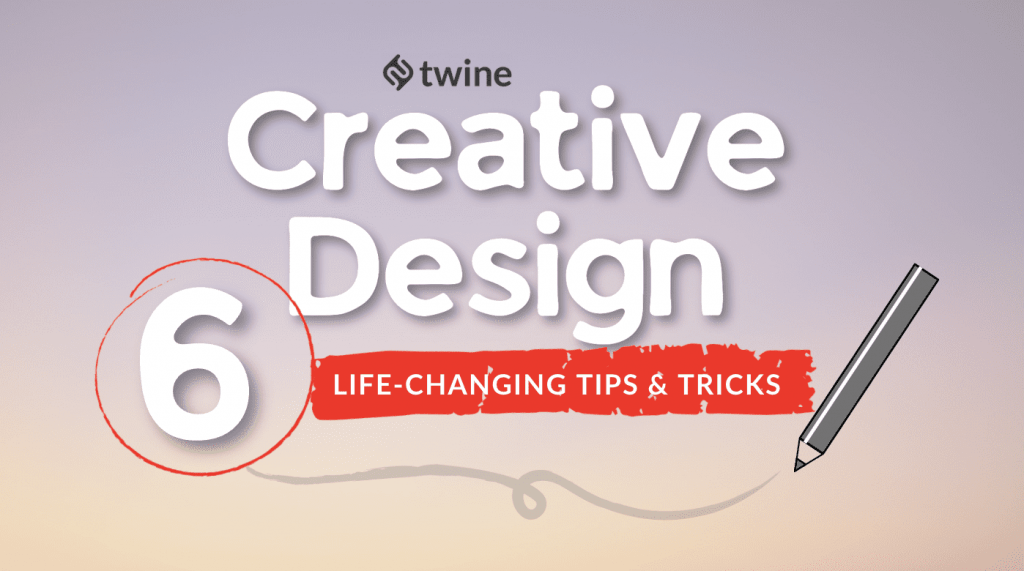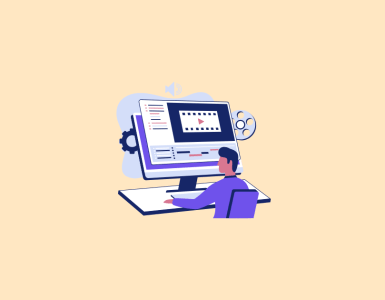
Your creativity is your number one asset when it comes to working with creative designs. As a creative content creator, it’s the well of ideas that you draw inspiration from. Without creativity, every tool and design software at your disposal wouldn’t be enough to build a strong body of work.
Yes, it’s important to do your research and keep up with the latest trends. But, nothing beats a good brainstorming session to let your creativity flow. Anything new that you can bring to your craft comes from your on-tap imagination.
There’s nothing worse than falling into a creative slump. We get it. If you don’t keep yourself relaxed and enlightened, you risk falling into the dreaded artist block, doing no work at all.
So, before you get to that stage, take some time out to refresh your palette.
If you’re struggling to find new ways to approach your creative designs, here are some ideas that can get you going again when you’re stuck:
Always Be Open to Inspiration
Give yourself the ability to design wherever you are.
No matter the location, time of day, or schedule, make sure you have a utensil at your disposal. Why? Because creativity often strikes when we least expect it. This way, you are totally prepared for that brainwave and can write down any ideas.
This can be as simple as a notebook in your backpack, or the note app on your phone! Whichever it is, keep it on you and keep it close.
Retain a childlike curiosity of the world, taking in every impression you have throughout the day. Let your subconscious turn ideas into elements you can use for your work.
You could also consider giving yourself a set amount of time to look at stimuli. This is a great way of sparking your imagination and giving yourself a fabricated deadline to work to. What could your stimuli be? Well, it could be beautiful artwork you’ve found online, or simply a high-quality stock image. Once you have your stimulus, make sure to keep them together within a folder, so you can visit them at any time.
Although it might seem counterintuitive sometimes, give yourself the space to step away from your creative design for a while. Discover what happens when your mind relaxes when you’re exploring the outdoors or meeting with friends.
Get Started on Paper
In today’s world, where everything is digitized, it can be refreshing to sketch your ideas on paper.
Although graphic design software is clever and great for finalizing work, nothing beats a good old doodle in a drawing pad. If you’re stuck, embracing the fluidity and all-around messiness of drawing on paper may be just the thing you need. After all, there’s no undo button – so you need to be creative when altering those mistakes!
A good way of utilizing a drawing pad is through daydreaming. Daydreaming is a great way to let your mind wander – works brilliantly when struggling with a creative block.
Be sure to switch off your inner critic for your daydreaming period, and use a journal to make notes, or draw, on whatever comes to mind. Make sure to give yourself a set amount of time, as it’s easy to get lost within your imagination in this creative process.
The inspiration from this technique is raw, and 100% total subconscious. Yes, some things may look a little strange – but don’t dismiss them immediately!
Rather, take all ideas in, and give them tweaks. What could you take from them? What has surprised you?
Use these ideas to experiment with a different approach, or, edit what you’re working on.
Develop a Mindfulness Practice
When your mind gets too cluttered, and you feel yourself getting stressed, make sure you take some time out.
It may feel counter-productive to have a break when you feel like you have 101 things to do, but trust us – it’s probably what you need. If you take on too much work and skip breaks, you’ll feel overwhelmed and eventually burn out.
To avoid creative exhaustion, be mindful of taking time to recharge.
Depending on your creative personality, this might mean completely stepping away from your desk and enjoying the outdoors. Or, it might mean going on a regular refreshing walk, to clear your mind. You may even find that establishing a meditation practice helps calm your racing thoughts, and give you clarity.
Whatever it is, keep it consistent, and keep taking care of yourself.
Also, make sure to have your journal handy, through whichever activity you opt for. Like we said before – you never know when inspiration can hit! Often, it’s when we’re most at peace, or have our minds preoccupied with other thoughts.
Having a mindfulness practice is also a fantastic way of keeping Imposter Syndrome at bay. If you’re suffering from IS, or are feeling particularly bad that day, try writing down everything you’re grateful for, to remind yourself that your creative block is only temporary.
Whatever you choose as your mindfulness routine, let it help you. Give your creative work a new pair of eyes every day!
Don’t Be Afraid of Making Mistakes
Sometimes when you feel stuck, the answer is that you may have backed yourself into a corner. When you’re afraid of experimenting or potentially making a mistake, you subconsciously limit your creative mind.
The trick is to not listen. This corner is most likely to just be in your head. Often in design work, fear comes from overthinking your approach – when the solution might actually be simple and waiting for you just around the corner.
If it feels like your design got too complicated, think about how you can simplify it and make it clearer. When you’re editing your work like this, avoid falling into the trap of perfectionism, as this very often stands in the way of finishing great work.
Allow some time to make tweaks, but, make a promise to yourself that by that self-imposed deadline, you’ll stop and move on. This is the key. Take note of any major changes or learnings that you can apply in your designs in the future, to avoid having the same issues again.
Consider Different Angles
When you feel like you’ve ended up in a dead-end, it’s time to be open to new ideas and consider various angles. Look back at the brief of your creative design project and think about an approach you haven’t tried yet. Ask yourself questions to see what kind of changes you could make:
- What am I trying to achieve with this design?
- Who is the target audience for this project?
- What haven’t I tried yet or what am I afraid of trying?
- How would a designer I admire approach this?
- Is my design too cluttered or are there any parts that need to be fleshed out more?
- If I could only start over one part of my design, which one would it be?
- How about experimenting with different background designs?
- Which design principles I’ve learned could I apply to improve my design?
- How can I make the visual hierarchy clearer?
If you think an idea is too extreme or doesn’t quite fit, run it by other creatives in your team or friends in the industry. Take in their feedback and use it to gain new momentum.
If you can, try scheduling some time to look into the project you’re stuck on at unexpected times. Often issues with creative work require a more relaxed mind, so shouldn’t be looked into at peak times of your day when you’re occupied with all your tasks. For example, if you’re a morning person, try looking into your project in the evening or at night when your mind wanders naturally as it relaxes.
Keep Challenging Yourself
To keep evolving and find new approaches to your designs, try other creative pursuits that have nothing to do with what you’re currently working on. Leaving your creativity comfort zone is challenging but can also be exciting and fill your well of inspiration with new ideas.
Try writing instead of designing, learn how to play an instrument you always wanted to have a go on, or express yourself through dance. Switching creative tasks like that can revitalize your imagination for your design projects. It takes you out of what you’re used to when working creatively and gets your brain to make new connections.
Challenging yourself to learn new skills also increases your self-confidence and becomes a good antidote to that impostor syndrome we all get once in a while. If you see yourself succeeding in something you’ve never done before, you’ll also be able to manage your fears better. You can prove to yourself that you can achieve anything as long as you put the time and effort into it.
Wrapping Up
Approaching your creative design from a different angle can be challenging. How you find your way back into your work when you’re stuck depends on your personality. You might need to draw inspiration from something completely unrelated to your work. Or you might be the type of person, who needs to doodle on paper for fun to take your mind off things.
Mindful breaks and letting your mind wander are more important than you might think and a small but consistent change in your daily routine can make a huge difference. Giving yourself time to relax and recharge propels you forward and lets you take in your surroundings to feed your imagination.
Try different approaches and find what works for you. Remember that this is not about getting it right or wrong but finding a way to spark your imagination. This will help you to find new angles for your creative designs every day.
Ready to get hired? At Twine, we have dozens of top-quality jobs being posted each and every day. From design to marketing, development to copywriting – there’s a job ready for your skills. Join the marketplace of creative talent here.



